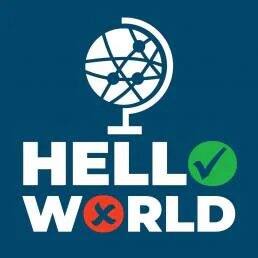



Note to readers: Hello world is a program developers run to check if a newly installed programming language is working alright. Startups and tech companies are continuously launching new software to run the real world. This column will attempt to be the "Hello World" for the real world.
 Claire Hughes Johnson is the chief operating officer at Stripe, a company valued at nearly a $100 billion. A few years ago, I came across a document she’d written up called working with me. It outlined a brief guide to what people working with her could expect.
Claire Hughes Johnson is the chief operating officer at Stripe, a company valued at nearly a $100 billion. A few years ago, I came across a document she’d written up called working with me. It outlined a brief guide to what people working with her could expect.
At the time, I figured that it was a good practice for busy executives and promptly filed it away under not immediately useful but hopefully some day. Around the same time, I got feedback from my team that I need to communicate better. I filed that under: to be done and started working on it too.
In April 2020, when the pandemic hit and we started working remotely, it became clear to me that it wasn’t just busy leaders like Johnson who needed to create a ‘working with me’ document. Everyone needed one. You see, working remotely meant that we don’t get to read the room, or bump into someone or have those chai sutta conversations any more.
Being remote meant that you often don’t have a feel for who you’re working with. For example, a naturally shy programmer may come across as rude at times when they have to say no to a marketing ask. An introverted leader may come across as cold and insensitive. Some of us, even as we come across as extroverts, are really introverts.
A document, or a manual of sorts, to help the other person understand who you are becomes really useful in this context. So I sat down and wrote a one-pager about how my colleagues could work with me. I picked elements from similar documents from a few leaders, added on some of my own and made a document which I dare say has helped a fair bit in getting better at communications.
So what should an ideal ‘working with me’ document contain? I divided mine into three broad sections that I cared about. Communications, accountability and approach.
Under communications, I talk about how I like meetings to be. I’m not a big fan of meetings for brainstorming. I like meetings where all of us go in with an understanding of what we want to accomplish. Meeting time is best used to make decisions. For high-stakes meetings, the famous Bezos method of writing memos and reading them before the meeting is super helpful. I also talked about how we could do 1:1 meetings and of course how we could communicate on email and text. I also make it clear that I’m always available for anything urgent, and that sometimes I get too excited about work or an idea and might get in touch on a weekend or off work. I add that they don’t need to feel pressured to respond immediately unless it’s an emergency. How we behave in online work groups is also something that I talk about.
As for accountability, I like to make it clear that mistakes are okay and that I don’t consider them to make or break a work relationship as long as we can learn from them and move past them. I explain my thinking about deadlines. Sometimes we slip up on deadlines. But what we need to be careful of is to know that we’re not going to meet a deadline in advance and plan for any eventualities. This means everyone has to anticipate the effort involved and plan ahead.
And lastly, I talk about my approach which is about how I like to give feedback (praise in public, criticize in private), how I’m vested in someone’s success, how I try to avoid falling into the availability bias trap while evaluating people and finally, how I want team members to have healthy debates and respectfully disagree with each other and me when needed.
In the 1993 Bollywood hit movie Baazigar, actress Shilpa Shetty asks Shah Rukh Khan (rough translation follows): you may have read many books but have you ever read a face? A book may be an overkill, but in a world where we don’t get too much face time with each other, it may not be a bad idea to write a one pager about yourself and share it with your colleagues.
Discover the latest Business News, Sensex, and Nifty updates. Obtain Personal Finance insights, tax queries, and expert opinions on Moneycontrol or download the Moneycontrol App to stay updated!
Find the best of Al News in one place, specially curated for you every weekend.
Stay on top of the latest tech trends and biggest startup news.